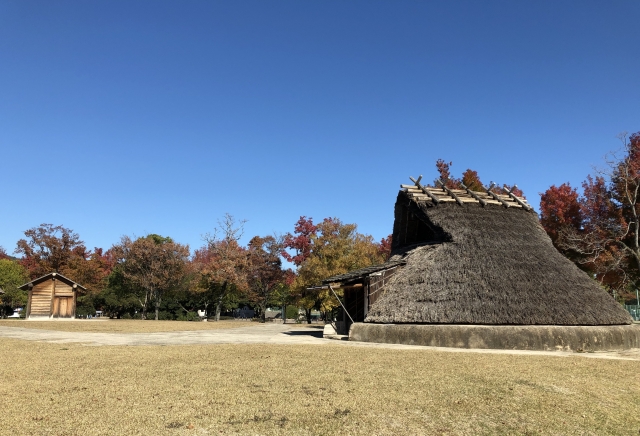 縄文時代 これは最も古い時代の一つで、約14,000 BCEから300 BCEまで続いていました。縄文時代の人々は、表面に縄のような模様が特徴の独特の陶器で知られていました。彼らは主に狩猟採集者であり、食糧を得るために漁業と採集に頼っていました。縄文時代は、先史時代の日本文化への貢献とその地域の歴史への長期にわたる影響の点で重要です。 | It’s one of the earliest periods, spanning from around 14,000 BCE to 300 BCE. The Jomon people were known for their unique pottery, characterized by cord-markings on the surface. They were primarily hunter-gatherers, relying on fishing and foraging for sustenance. The Jomon period is significant for its contributions to prehistoric Japanese culture and its long-lasting impact on the region’s history. 「span: 及ぶ」「hunter-gatherer: 狩猟採集民」「forage: 食料をさぐる」 |
 弥生時代 この時代は縄文時代に続き、紀元前300年から紀元300年までのおおよその時期に日付が付けられます。弥生時代は、米の栽培、金属加工、車輪の使用などを含む重要な文化の変化で特徴付けられています。弥生時代の人々は、アジア大陸から日本に移住したと考えられ、先進的な農業と技術の慣習をもたらしました。 | It follows the Jomon period and is dated roughly from 300 BCE to 300 CE. The Yayoi period is marked by significant cultural changes, including the introduction of rice cultivation, metalworking, and the use of the wheel. The Yayoi people are believed to have migrated to Japan from the Asian continent, bringing with them advanced agricultural and technological practices. 「migrate: 移住する」 |
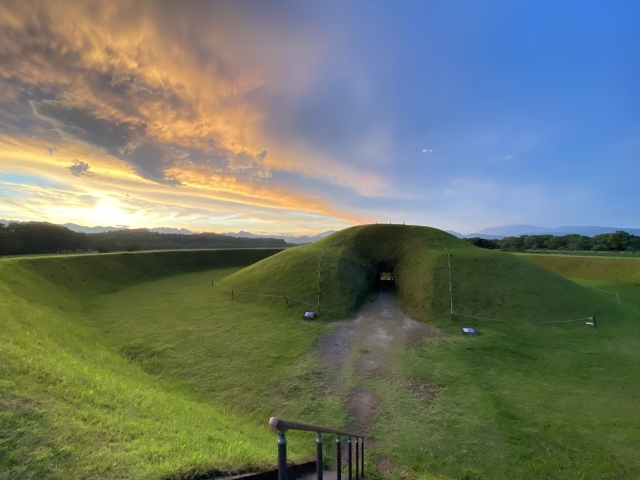 古墳時代 日本の古墳時代は、紀元3世紀から7世紀にかけて、古墳と呼ばれる鍵穴形の巨大な墳墓の建設が特徴でした。この時期は、中央集権的な政治権力の台頭、大陸からの技術の導入、およびエリート層のための独特な埋葬慣行の確立を特徴とし、日本の社会と文化の基礎を築きました。 | The Kofun Period in Japan, from the 3rd to 7th century AD, saw the construction of keyhole-shaped burial mounds called kofun. It marked the rise of centralized political authority, adoption of continental technologies, and distinctive burial practices for elites, shaping the foundation of Japanese society and culture. 「burial: 埋葬」 |
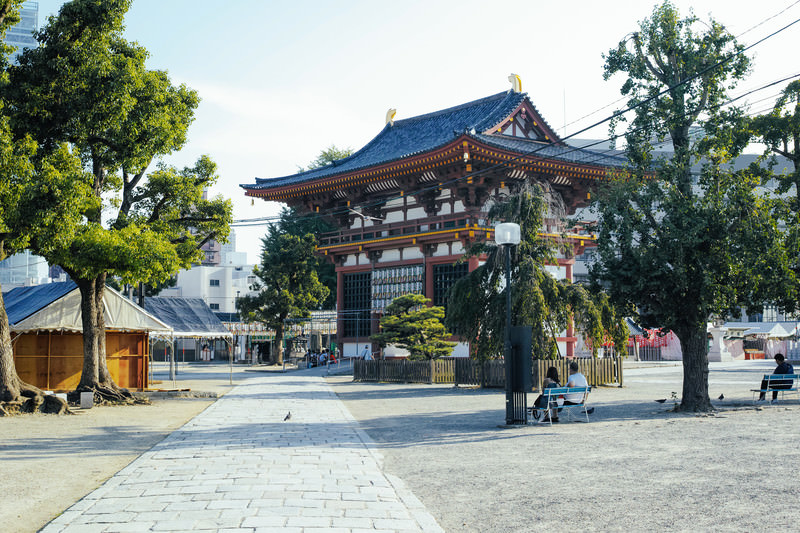 飛鳥時代 日本の飛鳥時代は、西暦6世紀後半から8世紀初頭にかけて、大和氏族の指導のもとで日本初の中央集権国家が確立されました。この時期には、朝鮮半島や中国から仏教が導入され、日本の文化に大きな影響を与えました。飛鳥時代は壮大な仏教寺院の建設や銅像、仏典などの精巧な芸術作品の創造で知られています。また、中国式の統治システムや文字の採用が政治と文化の発展の基礎を築きました。 | The Asuka Period in Japan, from the late 6th to early 8th century AD, saw the establishment of Japan’s first centralized state under the Yamato clan. Buddhism was introduced from Korea and China, shaping Japanese culture. Grand Buddhist temples were built, and Chinese governance systems influenced politics and writing scripts, laying the foundation for Japan’s development. 「grand: 壮大な」 |
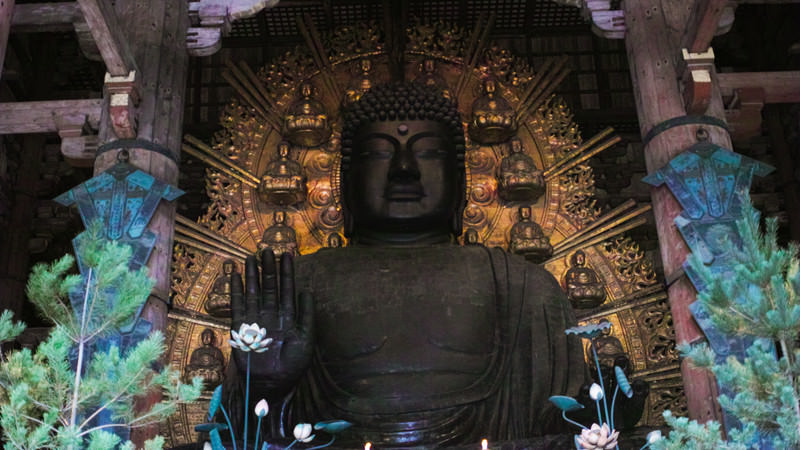 奈良時代 日本の奈良時代は、西暦710年から794年までの時期で、奈良を首都とし、仏教を国教として採用したことが特徴です。この時代には、壮大な寺院の建設、中央集権的な官僚制度、公式の歴史書や法典の編纂、そして芸術の繁栄が見られました。 | The Nara Period in Japan, from 710 to 794 AD, marked by the capital at Nara and Buddhism as state religion. It saw monumental temple construction, centralized bureaucracy, official histories, law code, and flourishing art. 「bureaucracy: 官僚」 |
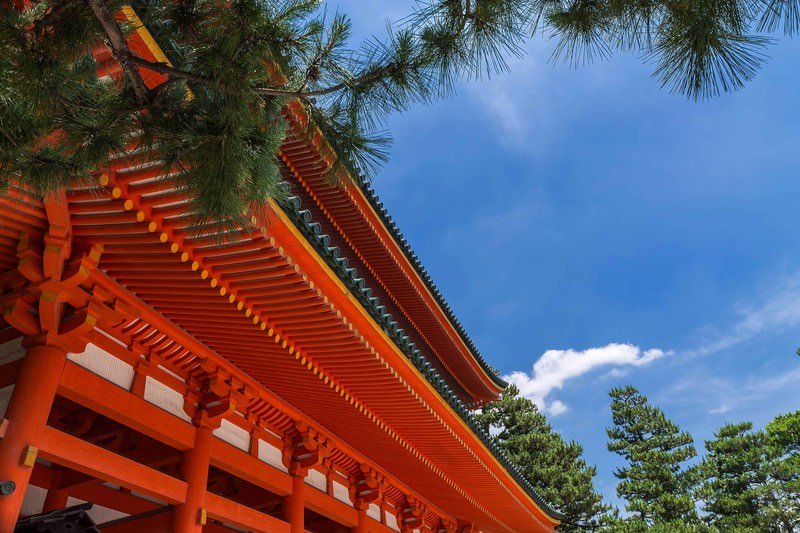 平安時代 日本の平安時代は、西暦794年から1185年までの時期で、首都が平安京(現在の京都)に移り、貴族文化が栄えました。これは平和で洗練された時代であり、和歌や源氏物語などの文学や芸術の重要な発展が見られました。 | The Heian Period in Japan, from 794 to 1185 AD, was marked by the capital’s move to Heian-kyō (Kyoto) and the flourishing of aristocratic culture. It was a time of peace and refinement, with significant developments in literature and art, including the emergence of waka poetry and the Tale of Genji. 「flourish: 栄える」「aristocratic: 貴族の」 |
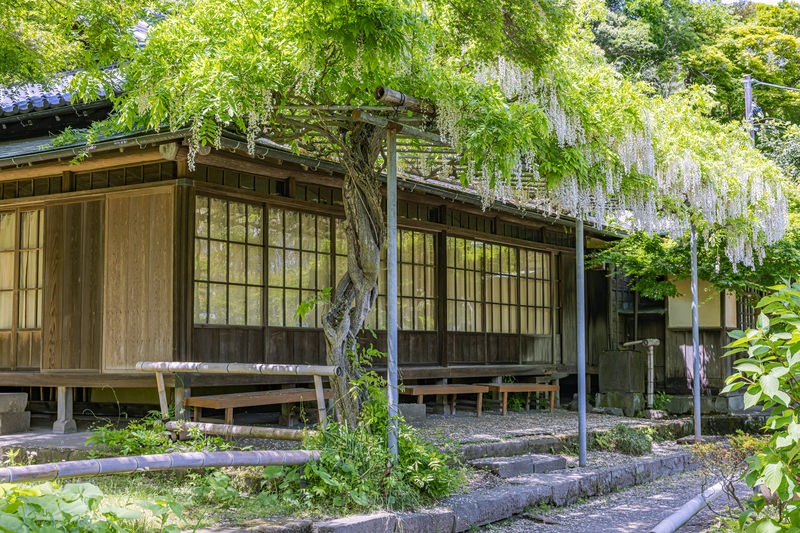 鎌倉時代 鎌倉時代は、1185年から1333年まで続いた時代で、鎌倉幕府の台頭に特徴があります。これは、源平合戦で源氏が平氏を打ち破った後に始まりました。この時代は地方の大名である「大名」が重要な権力を持つ分散された封建制度の確立を見ました。鎌倉時代は、武士の文化と禅仏教の融合、茶道や能楽などの伝統的な日本の芸術形式の登場が特徴です。 | The Kamakura Period in Japan, lasting from 1185 to 1333, was marked by the rise of the Kamakura shogunate, a feudal military government. It began after the Minamoto clan defeated the Taira clan in the Genpei War. This period saw the establishment of a decentralized feudal system, where regional lords called daimyo held significant power. The period is characterized by a fusion of samurai warrior culture, Zen Buddhism, and the emergence of traditional Japanese art forms such as the tea ceremony and Noh theater. 「shogunate: 幕府」「clan: 氏族」「feudal system: 封建制度」 |
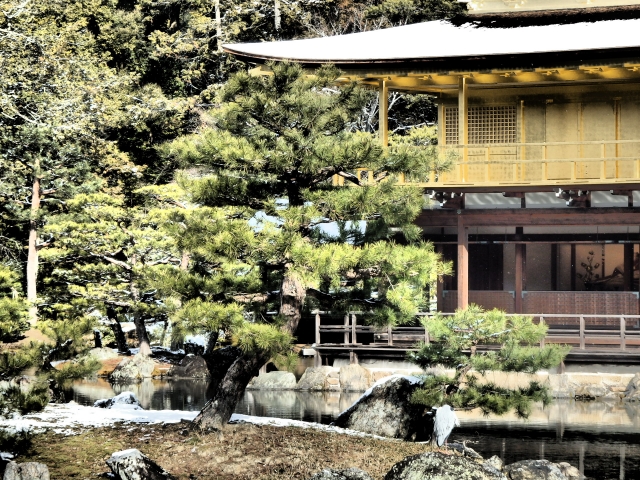 室町時代 室町時代(1336年から1573年)は、足利幕府の時代でした。これは、鎌倉幕府の崩壊に続き、足利尊氏が征夷大将軍として自らを確立しました。この時代は政治権力のさらなる分散、応仁の乱などの内乱、墨絵、茶道、能楽などの芸術の繁栄が見られました。 | The Muromachi Period (1336-1573) in Japan was dominated by the Ashikaga shogunate. It followed the collapse of the Kamakura shogunate, with Ashikaga Takauji establishing himself as shogun. This era saw further decentralization of power, civil unrest such as the Ōnin War, and cultural flourishing in the arts like ink painting, tea ceremony, and Noh theater. 「shogunate: 幕府」「unrest: 混乱」 |
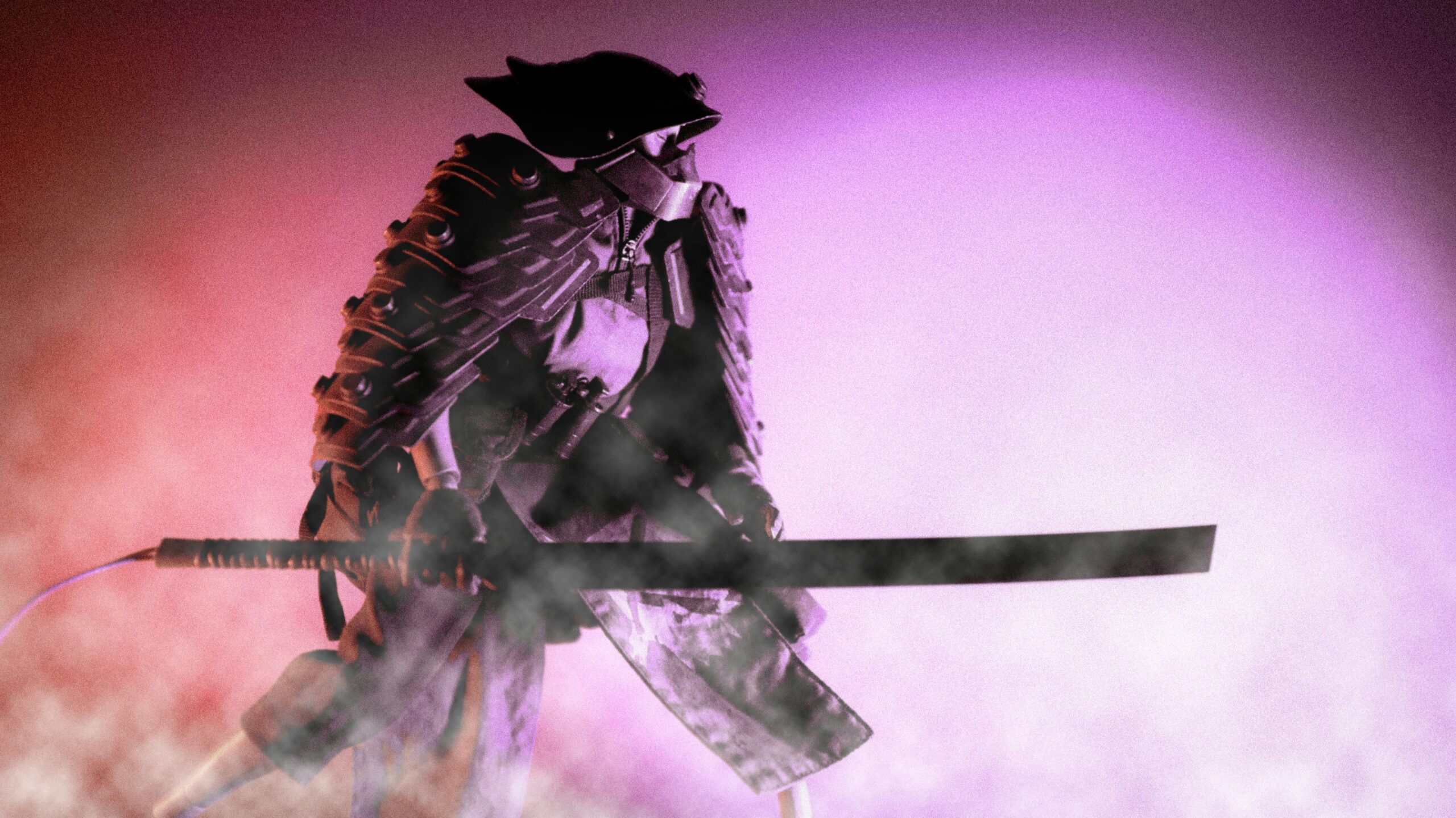 安土桃山時代 安土桃山時代(1568年から1600年)は、織田信長とその後継者である豊臣秀吉や徳川家康の台頭によって特徴付けられます。これは、戦国時代の混乱に続いており、これらの強力な武将の支配の下で日本が統一されました。この時代は、安土城などの壮大な城の建設、茶道文化の繁栄、日本美学の発展など、重要な文化的成就が特徴です。関ヶ原の戦いによる徳川幕府の確立で終わりました。 | The Azuchi-Momoyama Period (1568-1600) in Japan was marked by the rise of Oda Nobunaga and his successors, Toyotomi Hideyoshi and Tokugawa Ieyasu. It followed the turmoil of the Sengoku Period and saw the unification of Japan under the control of these powerful warlords. The period is characterized by significant cultural achievements, including the construction of grand castles such as Azuchi Castle, the flourishing of tea ceremony culture, and the development of Japanese aesthetics. It ended with the establishment of the Tokugawa shogunate following the decisive Battle of Sekigahara. 「turmoil: 混乱」「aesthetics: 美の」 |
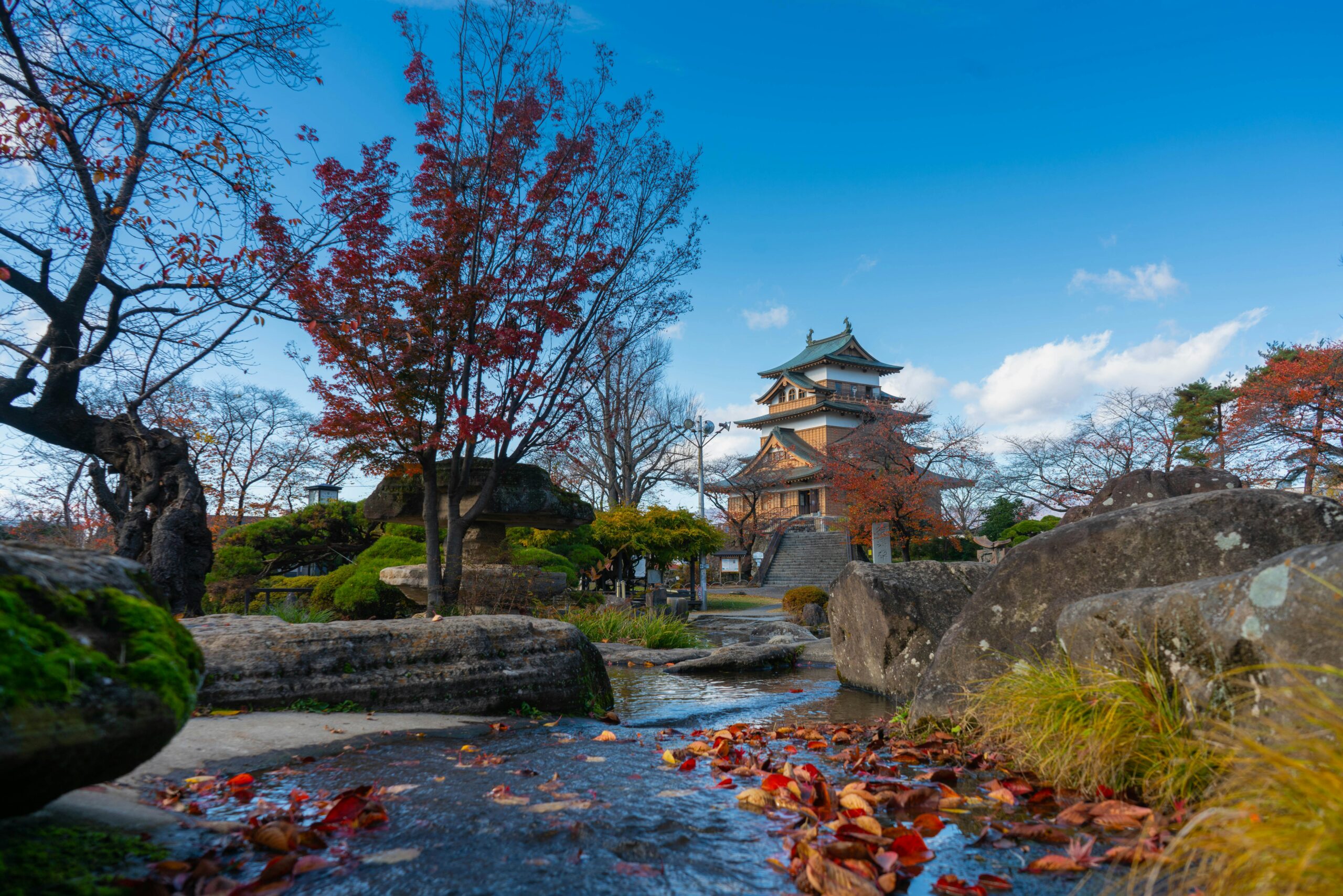 江戸時代 江戸時代(1603年から1868年)は、関ヶ原の戦いの後、徳川家康によって確立された徳川幕府の統治によって定義されました。これは比較的平和で安定した時代であり、厳格な社会階層と孤立主義政策が特徴でした。この時代は、歌舞伎や浮世絵、俳句などの芸術と文化の繁栄を見ました。しかし、政府の厳格な統制やキリスト教の弾圧も目撃しました。江戸時代は明治維新によって終わり、日本が封建制から近代への移行を示す出来事でした。 | The Edo Period (1603-1868) in Japan was defined by the Tokugawa shogunate’s rule, established by Tokugawa Ieyasu after the Battle of Sekigahara. It was a time of relative peace and stability, characterized by strict social hierarchies and isolationist policies. The period saw the flourishing of arts and culture, including the development of Kabuki theater, ukiyo-e woodblock prints, and haiku poetry. However, it also witnessed strict government control and the suppression of Christianity. The Edo Period ended with the Meiji Restoration, marking Japan’s transition from feudalism to modernity. |
 明治時代 明治時代(1868年〜1912年)は、日本社会のさまざまな側面での深刻な変革を特徴とする転換期でした。これは、徳川幕府の数世紀にわたる封建支配の終焉と帝国権力の復興を象徴し、日本の政治、経済、社会システムの近代化を目指す大規模な改革が行われました。この時期、日本は西洋の思想と技術を受け入れ、欧米の模範を取り入れた近代的な制度を整備し、野心的な産業化の取り組みを行いました。武士階級の廃止、中央集権的な政府の導入、近代的な教育制度の創設、そして立憲君主制の導入など、明治維新を定義する重要な変化が行われました。この急速な変化の時期は、20世紀に日本が世界の主要な大国として台頭するための基盤を築きました。 | The Meiji Period (1868-1912) in Japan was a pivotal era characterized by profound transformation across various facets of society. It marked the end of centuries of feudal rule under the Tokugawa shogunate and the restoration of imperial authority, leading to sweeping reforms aimed at modernizing Japan’s political, economic, and social systems. During this period, Japan embraced Western ideas and technologies, undertaking ambitious industrialization efforts and establishing modern institutions modeled after those in Europe and America. The abolition of the samurai class, the implementation of a centralized government, the creation of a modern education system, and the adoption of a constitutional monarchy were among the significant changes that defined the Meiji Restoration. This period of rapid change laid the foundation for Japan’s emergence as a major world power in the 20th century. 「pivotal era: 転換期」「abolition: 廃止」 |
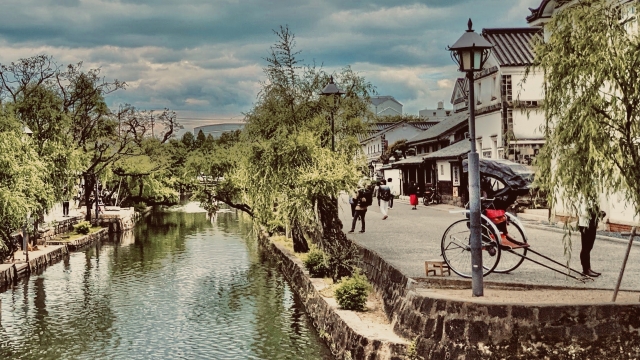 大正時代 大正時代(1912年〜1926年)は、変革期である明治時代に続く日本の時代であり、近代化、文化の革新、政治の動揺が融合した特徴を持っています。大正天皇の治世において、日本は近代化の課題に取り組みながら、「大正デモクラシー」として知られる芸術や知識の追求の繁栄を経験しました。民主主義や文化表現の進展にもかかわらず、この時期は政治的不安定さ、経済的苦境、社会的不満が特徴であり、第一次世界大戦の結果や1923年の関東大震災の余波によってさらに悪化しました。それでも、大正時代は日本がより民主的で自由な社会への移行の基盤を築き、その後の昭和時代への舞台を準備しました。 | The Taisho Period (1912-1926) in Japan followed the transformative Meiji Era and was characterized by a blend of modernization, cultural innovation, and political turbulence. Emperor Taisho’s reign saw Japan grappling with the challenges of modernity while also experiencing a flourishing of artistic and intellectual pursuits known as the “Taisho Democracy.” Despite the advancements in democracy and cultural expression, the period was marked by political instability, economic struggles, and social unrest, exacerbated by the aftermath of World War I and the Great Kanto Earthquake of 1923. Nonetheless, the Taisho Period laid the groundwork for Japan’s transition towards a more democratic and liberal society, setting the stage for the subsequent Showa Era. 「grapple: 取り組む」 |
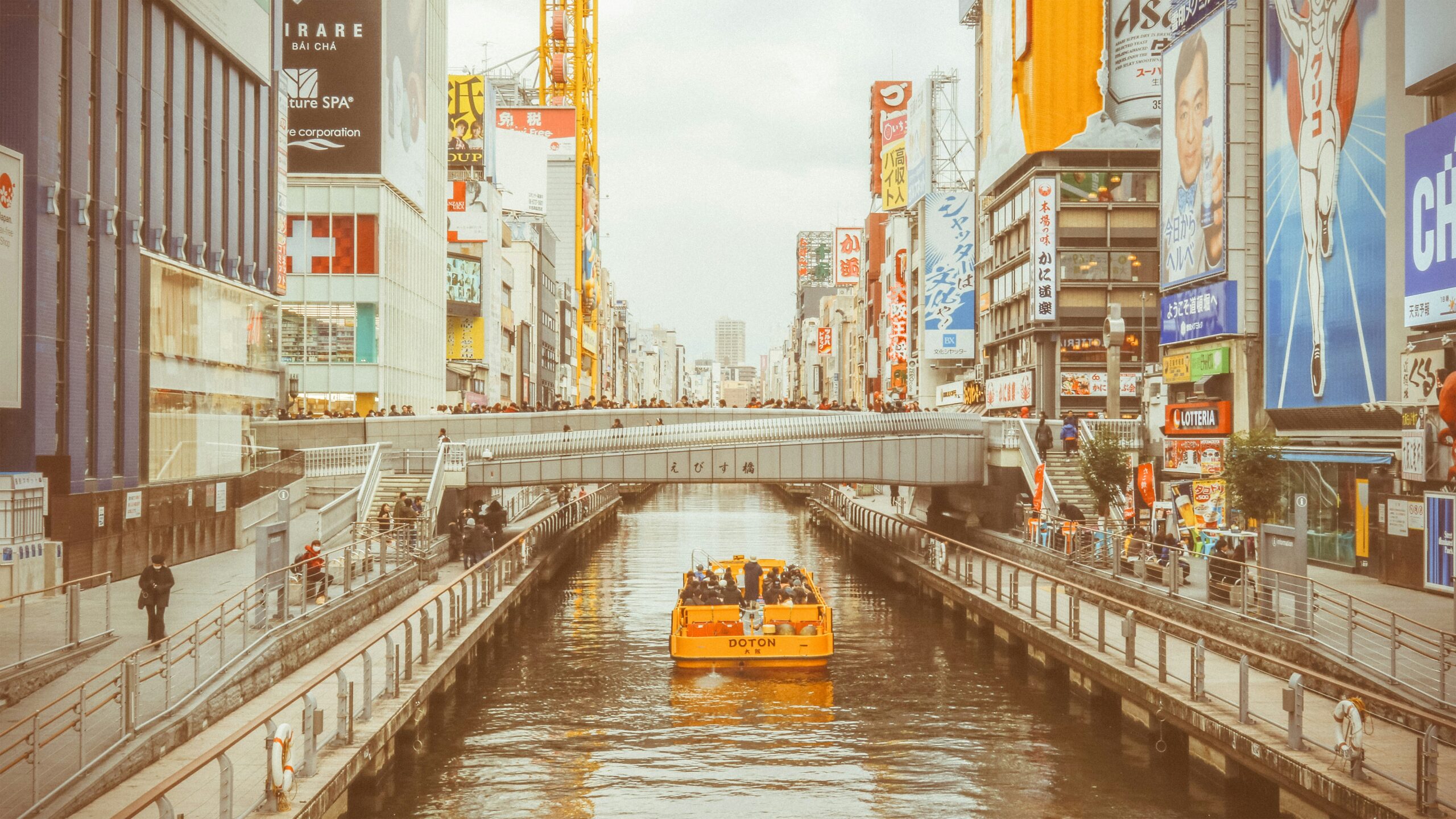 昭和 昭和時代(1926年〜1989年)は、日本史上最も動乱と変革の激しい時代の一つでした。広宮皇后の即位から始まり、日本は軍国主義や帝国主義への傾斜、そして最終的に第二次世界大戦での敗北を目撃しました。戦後、日本は広範な経済改革と連合軍の支援によって助けられ、復興と再建の期間を経験しました。昭和時代は、日本が世界的な経済大国として台頭し、アジアでの現代性の象徴として存在感を示した急速な経済成長、技術の進歩、社会の変化を包含しています。しかし、それは環境悪化、都市化、そして男女平等のための闘いを含む社会的な課題にも取り組んでいました。昭和時代は、1989年に広宮皇后の死去で終わりを迎え、現代の世界で日本のアイデンティティと方向性を形成し続ける複雑な遺産を残しました。 | The Showa Period (1926-1989) in Japan was one of the most tumultuous and transformative eras in its history. It began with Emperor Hirohito’s ascension to the throne and witnessed Japan’s descent into militarism, imperialism, and ultimately defeat in World War II. Following the war, Japan underwent a remarkable period of recovery and reconstruction, facilitated by extensive economic reforms and the support of the Allied Occupation. The Showa Era also encompassed rapid economic growth, technological advancement, and social change, as Japan emerged as a global economic powerhouse and a beacon of modernity in Asia. However, it was also marked by societal challenges, including environmental degradation, urbanization, and the struggle for gender equality. The Showa Period ended with Emperor Hirohito’s death in 1989, leaving behind a complex legacy that continues to shape Japan’s identity and trajectory in the modern world. 「ascension to the throne: 即位」「imperialism: 帝国主義」 |
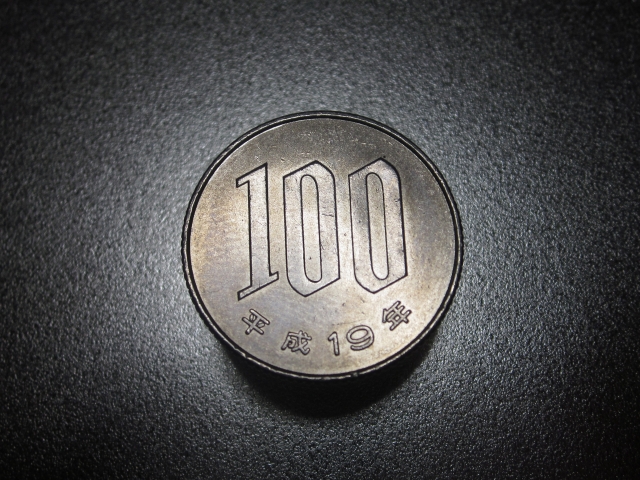 平成 平成時代(1989年〜2019年)は、日本における社会、経済、技術の大きな変革の時代でした。平成時代は、広宮皇后の死去を受けて明仁皇太子が即位し、1990年代初頭の資産バブル崩壊の余波に直面する日本を目撃しました。経済の停滞や高齢化、環境問題などの社会的課題に直面しながらも、平成時代には文化の革新やグローバル化が進展しました。特に電子およびデジタル産業の分野での技術革新は、日本のイノベーションのリーダーとしての評判を高めました。この時期はまた、日本の国際社会や国際経済への統合が進み、ジェンダー平等や社会福祉などの問題に対処する努力がなされました。平成時代は、2019年に明仁皇太子の退位をもって終わり、新たな時代「令和」の始まりを告げました。 | The Heisei Period (1989-2019) in Japan was a time of profound social, economic, and technological change. It began with Emperor Akihito’s accession to the throne following the death of Emperor Hirohito and witnessed Japan confronting the aftermath of the asset bubble burst in the early 1990s. Despite facing economic stagnation and social challenges, including an aging population and environmental concerns, Japan experienced significant cultural innovation and globalization during the Heisei Era. Technological advancements, particularly in electronics and digital industries, propelled Japan’s reputation as a leader in innovation. The period also saw Japan’s increasing integration into the global economy and international community, as well as efforts to address issues such as gender equality and social welfare. The Heisei Period concluded with Emperor Akihito’s abdication in 2019, marking the end of an era and the beginning of the Reiwa Era. 「accession to the throne: 即位」「abdication: 即位」 |
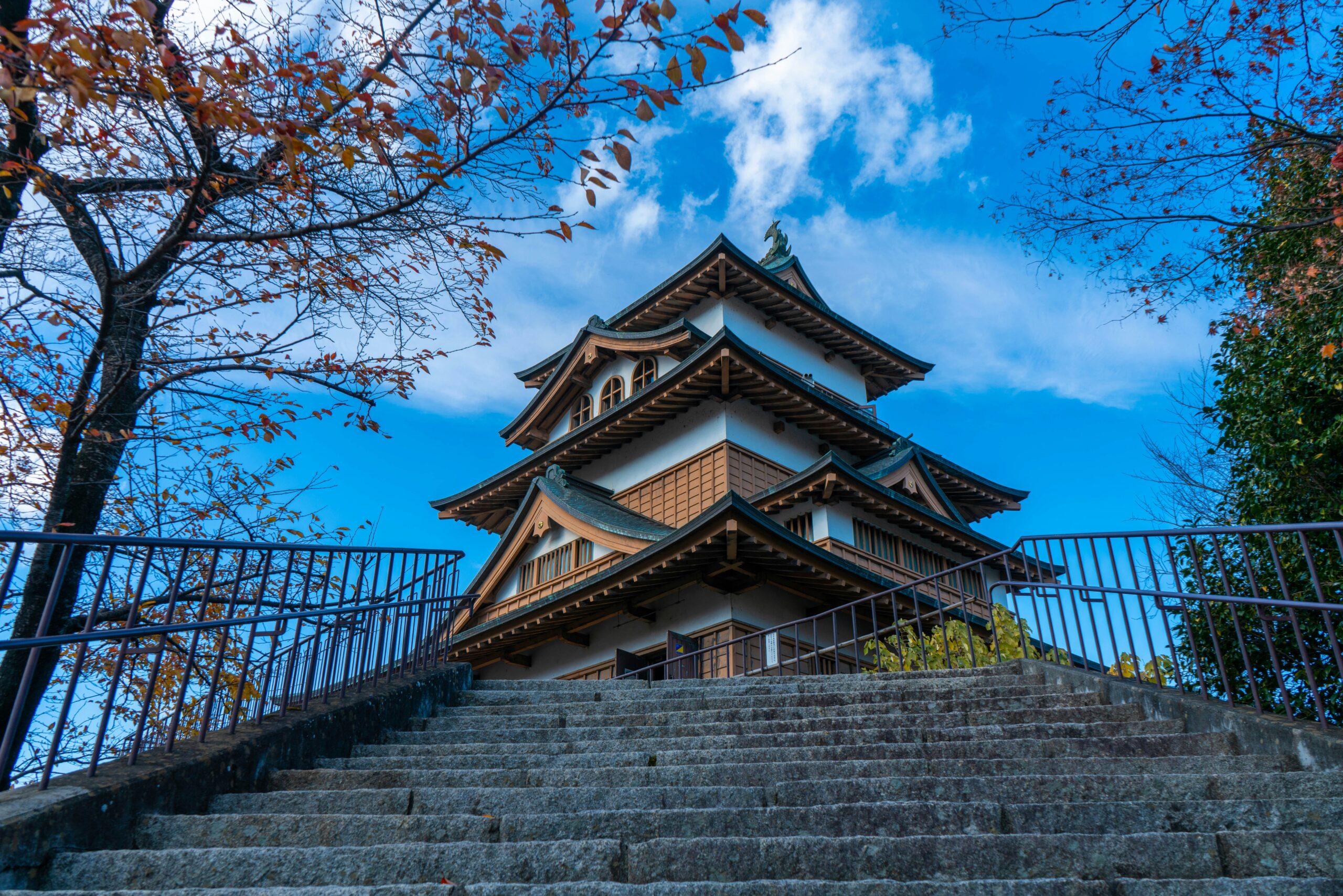 朝廷 朝廷は、伝統的な日本社会で天皇を中心とした政府システムと行政組織を指し、特に皇室の支配期間中に使用されます。 | 朝廷” (pronounced as “chōtei” in Japanese) translates to “imperial court” or “court of the emperor.” It refers to the governmental system and administrative apparatus centered around the emperor in traditional Japanese society, particularly during periods of imperial rule. |
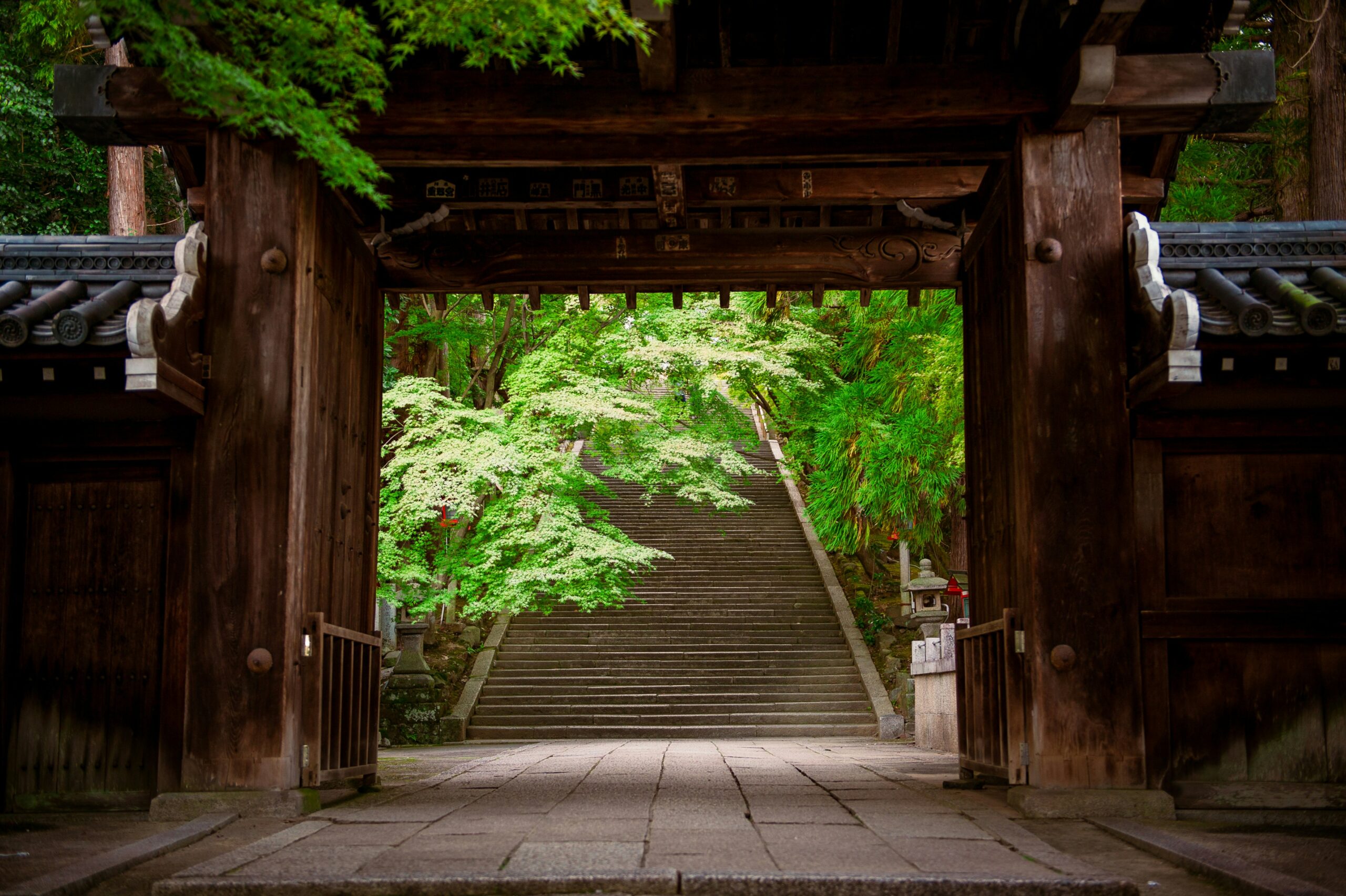 幕府 幕府は、日本の封建時代において武家が政権を握った軍事政権または将軍政権を指します。12世紀から19世紀にかけての間、約700年間にわたって存在しました。 | The Shogunate refers to the military government or shogunate that ruled Japan during the feudal period when warrior families held political power. It existed for approximately 700 years from the 12th to the 19th century. |
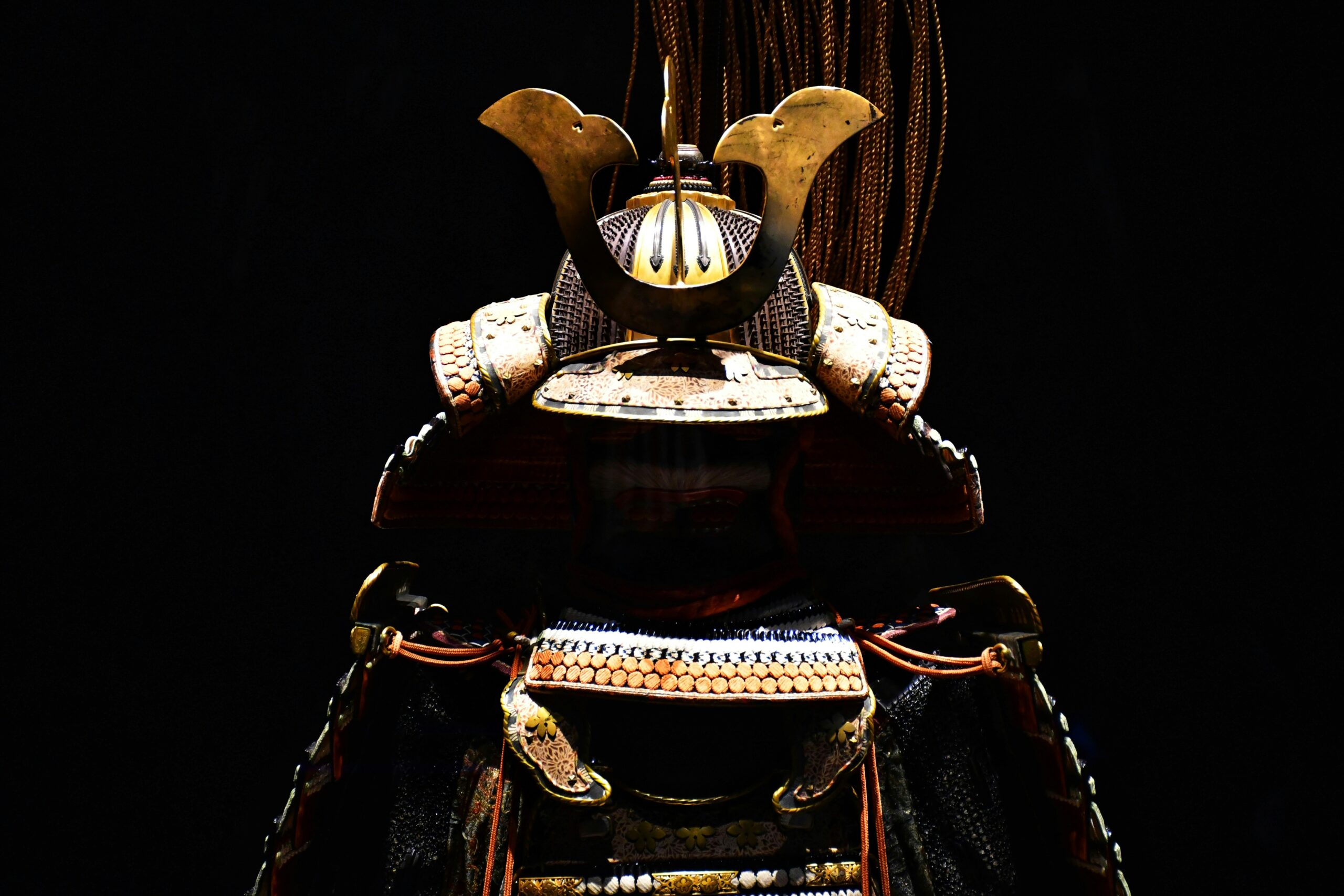 将軍 将軍は、日本の封建時代における強力な軍事独裁者でした。彼らは侍階級に権威を持ち、天皇の代わりに国を統治しました。将軍の地位は、様々な封建領主を統制し、権力を集中させる上で重要な役割を果たしました。 | The Shogun was a powerful military dictator in feudal Japan. They held authority over the samurai warrior class and ruled the country in place of the Emperor. The position of Shogun was crucial in maintaining control over the various feudal lords and centralizing power. |
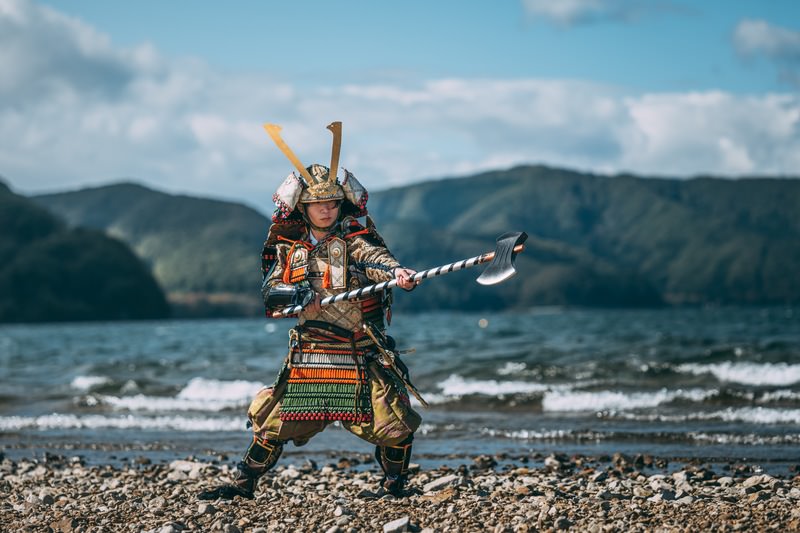 大名 大名は、封建時代の日本における強力な封建領主でした。彼らは自分自身の領土である藩を支配し、その領土内で相当な政治と軍事の権力を持っていました。大名は日本の政治の地景を形作る上で重要な役割を果たし、しばしば自分の下で侍が仕えていました。 | Daimyo were powerful feudal lords in Japan during the feudal period. They controlled their own territories, known as domains or han, and held considerable political and military authority within their domains. Daimyo played a significant role in shaping Japan’s political landscape and often had their own samurai warriors serving under them. |
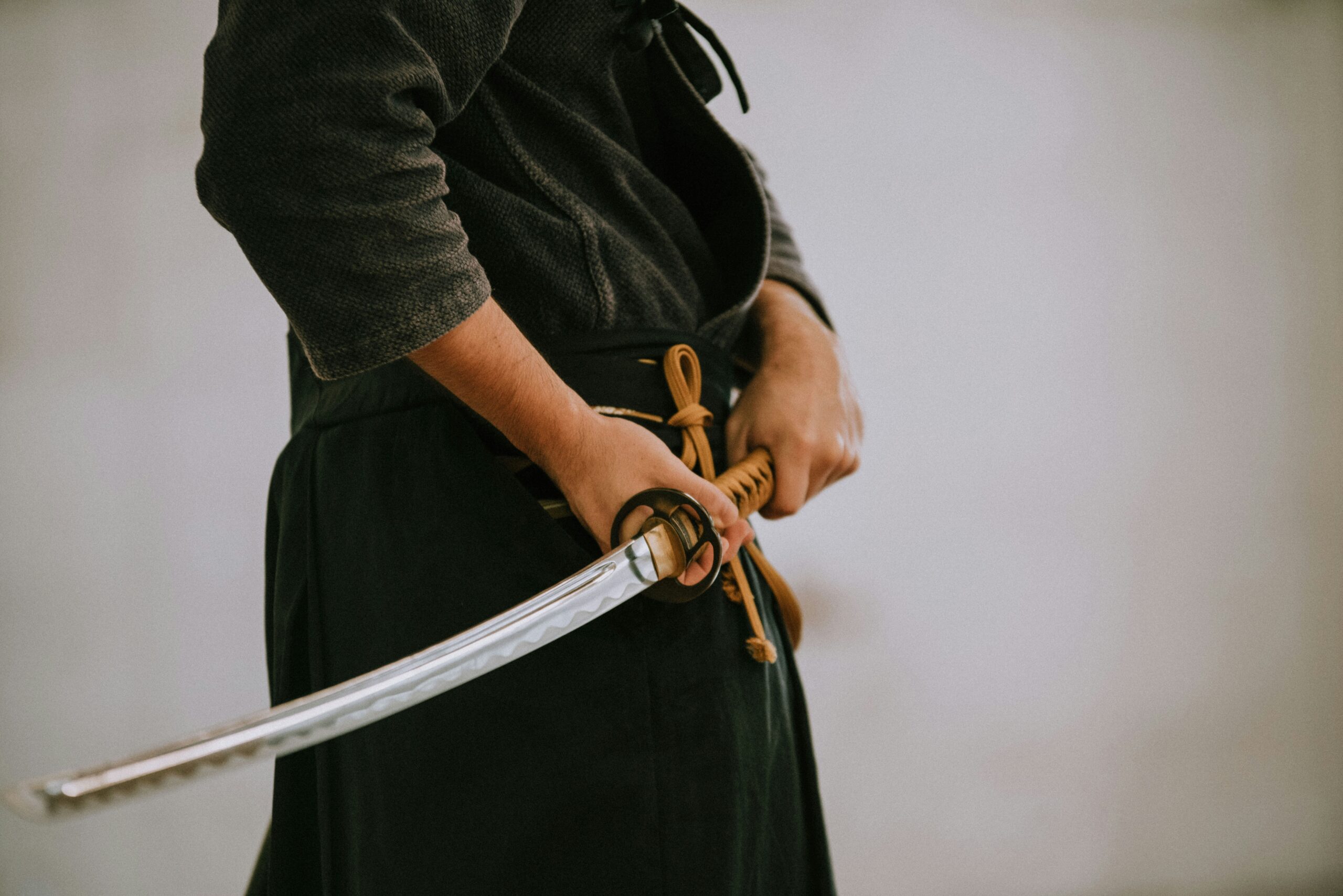 侍(武士) 侍は、封建時代の日本で大名や将軍に仕える戦士でした。彼らは忠誠心、勇気、自己規律を重視する厳格な道徳規範である武士道に従っていました。侍は武道に優れ、刀や弓などの様々な武器を使いこなす訓練を受けていました。 | Samurai were warriors in feudal Japan who served the daimyo or the shogun. They adhered to a strict code of honor known as bushido, which emphasized loyalty, courage, and self-discipline. Samurai were skilled in martial arts and were trained to be proficient in various weapons, including swords and bows. |
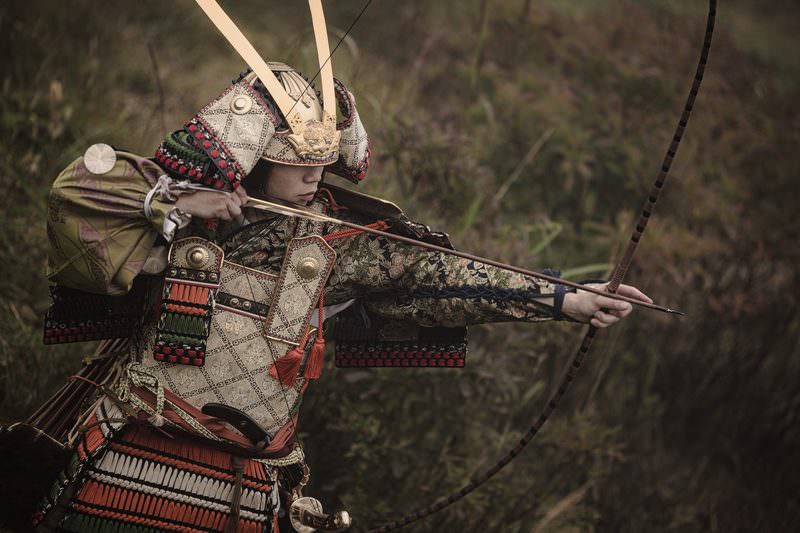 武士と侍 歴史的には、平安時代(794-1185年)の侍階級の設立前に戦士を説明するために「武士」の用語がより一般的に使用されていました。時間の経過とともに、「侍」という用語は、特に鎌倉時代(1185-1333年)以降に、より一般的な用語となりました。両方の用語はしばしば同義に使用されますが、「侍」は特に現代の文脈でより広く認識される用語です。 | Historically, the term “bushi” was more commonly used to describe warriors before the establishment of the samurai class during the Heian period (794-1185). Over time, “samurai” became the more prevalent term, particularly during the Kamakura period (1185-1333) and beyond. While the terms are often used synonymously, “samurai” tends to be the more widely recognized term in modern contexts. |
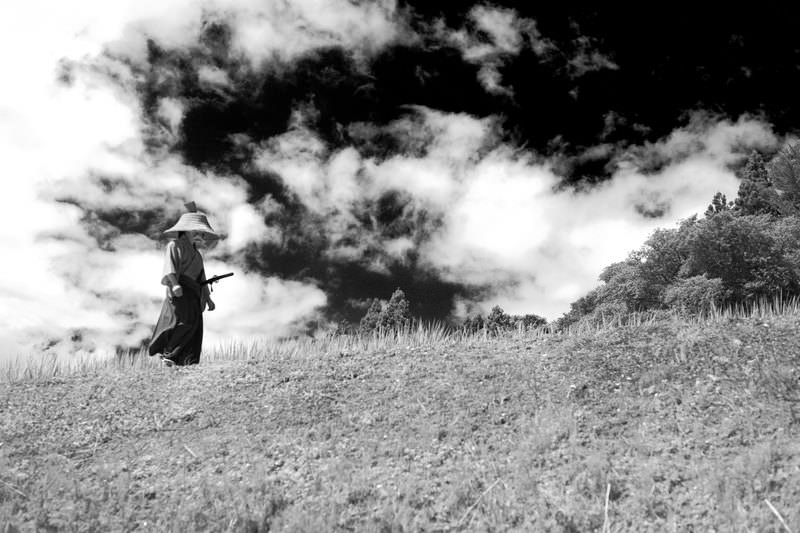 武士道 武士道は、「武士の道」と訳され、封建時代の日本において武士や武士によって守られた行動規範です。それは忠誠心、名誉、勇気、そして自己規律などの美徳を重視しています。武士道は武士の行動や決定を導き、彼らの戦場内外の行動を形作ります。 | Bushido, translated as “the way of the warrior,” is a code of conduct followed by samurai and bushi in feudal Japan. It emphasizes virtues such as loyalty, honor, courage, and self-discipline. Bushido guides samurai in their actions and decisions, shaping their behavior both on and off the battlefield. |
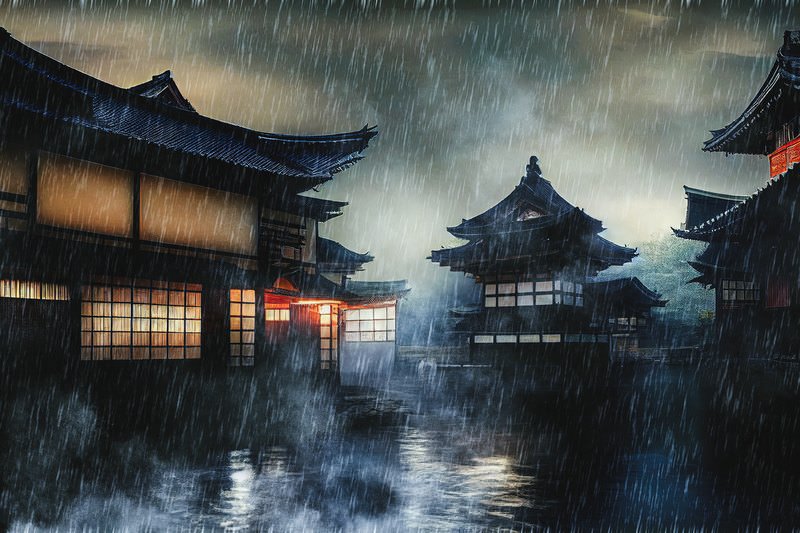 鎖国 鎖国は、江戸時代(1603年〜1868年)における日本の外界との隔離政策を指します。この政策の下、日本は外国との貿易や接触を厳しく制限し、国内の安定を保ち、外国の影響を防ぐことを目指しました。 | Sakoku, translated as “closed country,” refers to Japan’s policy of isolation from the outside world during the Edo period (1603-1868). Under this policy, Japan severely restricted foreign trade and contact with other countries, aiming to preserve internal stability and prevent foreign influence. |
 踏み絵 踏み絵は、江戸時代の日本でキリスト教徒を特定するために使用された慣行を指します。疑われたキリスト教徒は、自分の信仰を試すためにイエス・キリストや聖母マリアの画像に踏まされました。 | Fumie, translated as “stepping on the picture,” refers to a practice used during the Edo period in Japan to identify Christians. Suspected Christians were forced to step on an image of Jesus or the Virgin Mary as a test of their faith. |
 寺子屋 寺子屋は、江戸時代の日本における私立の教育機関を指します。これらの学校は通常、仏教寺院や個人が運営し、子供たちに読み書き算術などの基礎教育を提供しました。 | Terakoya, translated as “temple school,” were private educational institutions in Japan during the Edo period. These schools were typically run by Buddhist temples or private individuals and provided basic education to children, including reading, writing, and arithmetic. |
